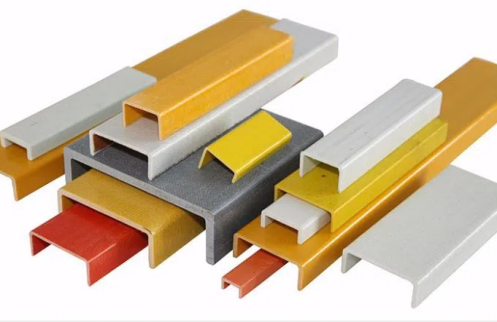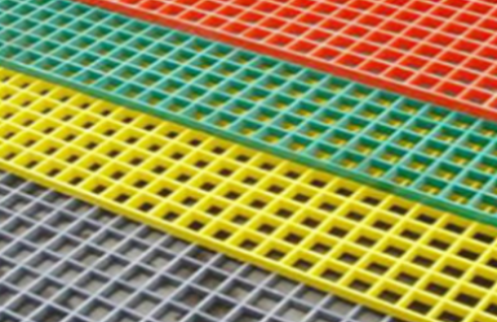What is glass fiber reinforced plastic?
Glass fiber reinforced plastics are a wide variety of composite materials with different properties and wide applications. It is a new functional material made of synthetic resin and fiberglass composite material through a composite process.
The characteristics of glass fiber reinforced plastics:
(1)Good corrosion resistance: FRP is a good corrosion-resistant material. It has good resistance to the atmosphere; water and general concentrations of acid and alkali; salt, various oils and solvents, and has been widely used in chemical anti-corrosion. of all aspects. It is replacing carbon steel; stainless steel; wood; non-ferrous metals and other materials.
(2) Light weight and high strength: The relative density of FRP is between 1.5 and 2.0, which is only 1/4 to 1/5 of that of carbon steel, but the tensile strength is close to or even higher than that of carbon steel, and the strength can be compared with high-grade alloy steel. , are widely used in aerospace; high-pressure containers and other products that need to reduce their own weight.
(3) Good electrical properties: FRP is an excellent insulating material, used to make insulators, and can still maintain good performance at high frequencies.
(4) Good thermal performance: FRP has low electrical conductivity, 1.25~1.67KJ at room temperature, only 1/100~1/1000 of metal is an excellent thermal insulation material. Ideal for thermal protection and ablation resistance under transient high heat conditions.
(5) Excellent process performance: the molding process can be selected according to the shape of the product, and the process is simple and can be molded at one time.
(6) Good designability: materials can be fully selected according to needs to meet the requirements of product performance and structure.
(7) Low elastic modulus: The elastic modulus of FRP is 2 times larger than that of wood but 10 times smaller than that of steel, so it is often felt that the rigidity is insufficient in the product structure and is easily deformed. The solution can be made into a thin shell structure; the sandwich structure can also be made up in the form of high modulus fibers or reinforcing ribs.
(8) Poor long-term temperature resistance: Generally, FRP cannot be used for a long time at high temperature, and the strength of FRP of general-purpose polyester resin will decrease significantly when it is above 50 degrees.
(9) Aging phenomenon: under the action of ultraviolet rays; wind, sand, rain and snow; chemical media; mechanical stress, etc., it is easy to cause performance degradation.
(10) Low interlaminar shear strength: The interlaminar shear strength is borne by the resin, so it is low. The interlayer adhesion can be improved by selecting a process, using a coupling agent, etc., and try to avoid interlayer shearing during product design.
Advantages of glass fiber reinforced plastics:
The heat-resistant temperature of glass fiber reinforced plastics is much higher than that without glass fiber, especially nylon plastics
Glass fiber reinforced plastics have low shrinkage and high rigidity.
The glass fiber reinforced plastic does not stress crack, and the impact resistance of femoglas fibra de vidrio plastic is much improved
The strength of glass fiber reinforced plastics is high, such as: tensile strength, compressive strength, bending strength, all are very high.
Due to the addition of other additives, fiber gllas reinforced plastics have greatly reduced the combustion performance of glass fiber reinforced plastics, and most materials cannot be ignited, so it is a flame retardant material.
Disadvantages of glass fiber reinforced plastics:
Due to the addition of e glassfiber, the glass fiber reinforced plastic has become opaque, and it is transparent before adding glass fiber.
The plastic glass fiber reinforced plastic has lower toughness and increased brittleness than the plastic without glass fiber;
Due to the addition of glass fiber, the melt viscosity of all materials increases, the fluidity becomes poor, and the injection pressure is much higher than that without glass fiber. For normal injection molding, the injection temperature of all reinforced plastics is higher than that without adding glass fiber. The glass fiber was previously raised by 10℃-30℃.
Due to the addition of glass fiber and additives, the hygroscopic properties of daw fiberglass reinforced plastics are greatly enhanced. The original pure plastics that do not absorb water will also become absorbent. Therefore, they must be dried during injection molding.
During the injection molding process of glass fiber reinforced plastic, the glass fiber can enter the surface of the plastic product, making the surface of the product very rough and speckled. In order to achieve higher surface quality, the mold temperature machine is used to heat the mold during injection molding, so that the plastic polymer enters the surface of the product, but the appearance quality of pure plastic cannot be achieved.
After the glass fiber is reinforced, e glass fibreglass is a material with high hardness. After the additive is volatilized at high temperature, it is a very corrosive gas, which causes great wear and corrosion to the screw and injection mold of the injection molding machine. Therefore, this kind of material is used in production. When using the molds and injection molding machines, pay attention to the surface anti-corrosion treatment and surface hardness treatment of the equipment.
Reinforcing effect of glass fiber on nylon
Nylon, also known as polyamide, is a synthetic material with a wide range of applications, which is used in textiles, packaging, mechanical parts and other fields.
As an engineering plastic, PA66 contains a large number of hydrophilic amide groups, which limits its application field. It is commonly used in the industry to modify it by means of copolymerization, blending toughening, and strengthening.
Glass fiber reinforcement is a commonly used modification method. It can effectively enhance the wear resistance, strength, hardness and dimensional stability of nylon.
Glass fiber is made of pyrophyllite, quartz sand, limestone and other minerals through high temperature firing, wire drawing, winding, weaving and other processes, and its monofilament diameter is about a few microns.
Principle of glass fiber reinforcement: There are three ways for fiber to absorb impact strength: fiber breakage, fiber pullout, and resin breakage. When the fiber length increases, the fiber pulling out consumes more energy, which is beneficial to the improvement of the impact strength.
PA66/glass fiber composite material has low water absorption, high specific strength and chemical resistance, and its products have good moisture absorption resistance, dimensional stability, high strength, hardness, and processing performance, so it is widely used in railways, machinery , automotive, electrical appliances and other fields.
The length of material elastic modulus fiber glass generally used to strengthen nylon is about 3mm to 12mm. As the fiber length increases, the effect on material reinforcement increases. Good at around 12mm.
Normally, the length of fiberglass filament is 12mm, and the length of chopped glass fiber is 3mm. Compared with short glass fiber, the remarkable feature of long glass fiber reinforcement is that the impact strength is doubled. In addition, long glass fiber reinforced nylon composites have the advantages of high strength, high rigidity, high notched impact strength, short-term heat resistance and good fatigue resistance, and can still maintain good mechanical properties in high temperature and high humidity environments. , which can be used as a structural material instead of metal.
#fiberglass composite material #fiber gllas#e glass fibreglass#fiberglass filament #chopped glass fiber
Post time: Nov-16-2022


